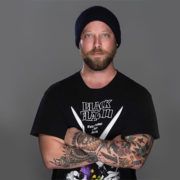Oldemiro Lima is an outdoor and landscape photographer based in Porto, Portugal. Oldemiro draws his inspiration from his artistic family. He had a creative eye since very young and an inclination towards drawing before turning into a photographer. Coupled with simplicity of concept and exquisite colors, his photographs are indeed a treat to the eyes.
Oldemiro speaks to us about his journey as a photographer, his lens and equipments and his experience with Pixpa.
1. A very little is known about your personal life on your website. Tell us more about yourself and your interests. Where do you call home?
Since childhood, my life has been a continuous escape from the old city that a lived (Porto, in Portugal) to nature. Now, in my forties, I still live in this town and work outdoors. Photographing, Hiking, climbing, running, fishing and sometimes travel, hiking and camping with my wife Isabel and my son Daniel, have been the most important parts of my life. Like all other families we live the urban routine and appreciate many attractions (such a cinema or take a coffee out).
Also check out: Best Hiking Gloves by Mindfultravelexperiences.
I enjoy the contrast between the frenetic beat of life and the silence from the great wild spaces. Perhaps, some day the call of the wild will be stronger and we would move from the city.
For me, photography is only connected with outdoor life. I can’t make an image in pure urban environment; but I work many times in some natural niches very near from city. My ultimate personal challenge is to shoot photographs in urban spots where you can feel the presence of the natural element.
In way or other, my photographic expressions are influenced by the wide range of my other personal interests like art, science, philosophy, human condition, literature, wine, cooking, ski, spearfishing, sea, beach and natural world. All this makes my life totally complete. Sometimes, I feel that one life is not enough!

2. When did you decide to become a photographer? Did you attain any formal education in photography?
I am a self-taught photographer. But, before I started photography, I used to draw. My visual education comes from drawing. I always needed to express myself aesthetically. I think that is a genetic predisposition, something that comes from my family. My father also drew and was silver sculptor, my brother is a painter and drawing teacher in university. Photography became a part of my life because the act of drawing gradually became an uncomfortable one for me. It was difficult for me as I tend to stay many hours stuck on same place.
Additional resource: Eagle Photography By Debi
Since childhood I also felt a great attraction to go out into the wild and express myself physically. Since I was fourteen years old I started hiking and camping and when I was seventeen I start climbing. So, photography becomes the perfect marriage between these two personnel needs. Being a photographer was not a predefined chosen, but was a natural step.
3. Your photographs have been published across the world. What is the one thing you maintain in your photography that makes it so unconventional?
The moment, the simplicity, the subtlety and the framing are my highest obsession. More and more, I search for simplicity and subtlety, for images that contain some strong concept, some message, some emotion, other than great colors or the beauty. I like straight photography, without effects, exaggerated retouching or processing. This is the path I’m following. Maybe this is a little unconventional in the kind of photography I do.

4. You seemed to have worked on both individual and group projects. What are your thoughts on working on single images versus projects?
Normally, projects are a connecting wire between images. Together, the photos must be representative elements from a broad idea. When I think about a project, I see it as a story to show that connection as a collection. Single images can appear from a particular idea or vision, or may be purely documentary.
5. What equipments (camera/light/editing tools) do you think are mandatory for a perfect photograph?
Actually, all big brands of photographic equipment and software have the finest solutions for the finest visions. The offers are many and they’re high quality too. I have my own preferences, though not obsessed with anyone in particular.
I work with the minimum equipments, because I like to work very close to my subject. In most cases I use two lens, 17/35mm f 4 and 50mm f 1.4 (sometimes, I use an 80/200m f2.8) in one 35 mm camera body system. Occasionally one small flash gives me the complementary light that I need.
I think what is really mandatory is to only have a simplest gear to capture, save, process and show your ideas. Because, the perfect photo comes first from our mind.

6. How were you introduced to Pixpa? How has been your experience so far?
I found Pixpa in a web search, trying to find a site to show my work. From all offers Pixpa was the finest deal for me: the best package with best quality and best price. The many features available at an affordable price made me vouch for Pixpa immediately.
It’s been an easy and enjoyable journey with systems provided by Pixpa. I appreciate their care by producing changes and continuous development.
Build your Online Portfolio with Pixpa.


